The Health Benefits of Using a Pressure Cooker
What if I told you that there was a way to cook your food with the following results:
- Up to 90 percent less cooking time
- 90 percent nutrient retention
- Greater digestibility
- Fewer harmful cooking byproducts
And what if I told you that this method will also produce some of the most succulent, flavorful and easy-to-make meals that you have ever set on the table?
Sounds too good to be true, right? Well, it’s not! In fact, this unique way of cooking has been around for more than 300 years, since its invention by a French physician in 1679.
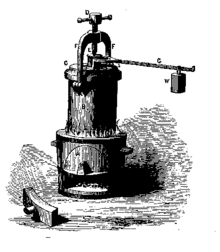
What is this cooking method? Pressure cooking!
You’ve probably tasted foods prepared in a pressure cooker before, perhaps from your mother or grandmother. But you may have shied away from using one due to their “dangerous” reputation. The truth is that while there are some stories about “exploding” pressure cookers, these stories almost invariably relate to the early-generation models used in the 1940s and 50s. Today’s pressure cookers (Amazon link) are virtually foolproof and are no less safe than any other kitchen tool when used properly.
So, let’s take a look at the many benefits of using a pressure cooker:
#1 – Using a Pressure Cooker Provides Superior Nutrient Retention and Bioavailability
Researchers estimate the nutrients in our foods have declined dramatically (up to 50 percent in some foods) due to the depletion of nutrients in the soil. When you combine that with many cooking methods, which destroy or drain nutrients away from your food, the result is meals that just don’t provide the nutritional value your body needs.
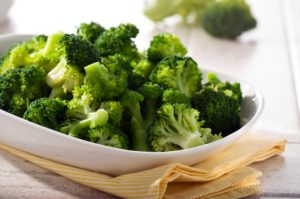
A pressure cooker can greatly reduce the time it takes to cook your food. This directly correlates with the loss of fewer heat-sensitive nutrients. Let’s take a look at the research:
- In Plant Foods for Human Nutrition, researchers found that pressure cooking was the best method for retaining both vitamin C and beta-carotene in spinach and amaranth
- A study published in The Journal of Food Science found that pressure cooked broccoli retained 90 percent of its vitamin C content. Compare this to boiling (66 percent retention) or steaming (78 percent).
- A study published in the Journal of Food Science and Technology found that pressure cooking increased the amount of beneficial phenolics in bananas. Researchers believe that the high pressure broke the banana’s cell walls, making the nutrients more bioavailable.
But using a pressure cooker won’t just help boost the levels of nutrients you get from your food… it can also help reduce health harming compounds, as well.
#2 – Using a Pressure Cooker Helps to Reduce Health-Harming Compounds (Including Acrylamide, HCA’s, Lectins and Phytic Acid)
Because a pressure cooker basically uses “steam under pressure”, foods stay moist. They are literally bathed in steam as they cook. This translates to juicier, better tasting food. It also helps eliminate two cancer-causing compounds (acrylamide and heterocyclic amines) which are often produced by other high-heat cooking methods.
And if you’re concerned about lectins and phytic acid – two anti-nutrients in grains, legumes and pseudograins like quinoa which can bind to minerals and make them indigestible – the pressure cooker can help there too.
In fact, another study published in Plant Foods for Human Nutrition showed that when peas were soaked overnight and then boiled, their phytic acid content was reduced by 29 percent. On the other hand, when they were soaked overnight and then pressure cooked, the reduction in this unhealthy anti-nutrient was almost double (54 percent).
Similar results were found with lectins in the Journal of the Science of Food and Agriculture.
#3 – Pressure Cooking Helps Boost Digestibility
As you may have heard before, you’re not what you eat… but rather, what you absorb.
Boosting the digestibility of your food is a key to maximizing the potential nutritional value of every bite.
And the pressure cooker can help you accomplish this too.
The combination of steam and pressure can make even the toughest meats succulent and tender. And tenderness is a key sign that a food is easy for your body to digest.
In the case of the hard-to-break-down protein in legumes, the pressure cooker has been found to increase the digestibility by as much as 84 percent.
#4 – Save Time and Money with a Pressure Cooker
If all of these benefits aren’t enough to get you pressure cooking, consider this: You’ll also save time and money.
You can cook a whole chicken to fall-off-the-bone tender in just half an hour… make butter-knife tender shredded pork or beef in less than 2 hours… make gelatin-rich bone broth in 30 minutes… cook a large winter squash in 10 minutes… as well as Brussels sprouts and most other veggies in less than five!
And by saving cooking time, you’ll also save money on your electric bill.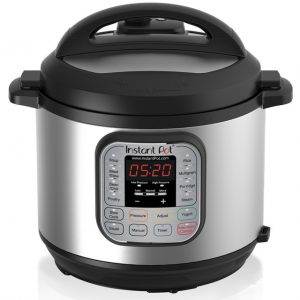
If you don’t have a pressure cooker yet, there are many high-quality, inexpensive options available. The third-generation Instant Pot is the one I use. The vessel is made of stainless steel, which is another benefit if you are concerned about the leaching that can occur in ceramic slow-cookers or the chemicals in non-stick coatings. The cost is about $115 and it comes with a variety of safety features and ease-of-use benefits.
Once you start cooking these fast, nutrient-rich, fork-tender meals with your pressure cooker, you’ll never want to use anything else!
We want to hear from you! Do you use a pressure cooker? If so, what kind do you use and what is your favorite dish to make?
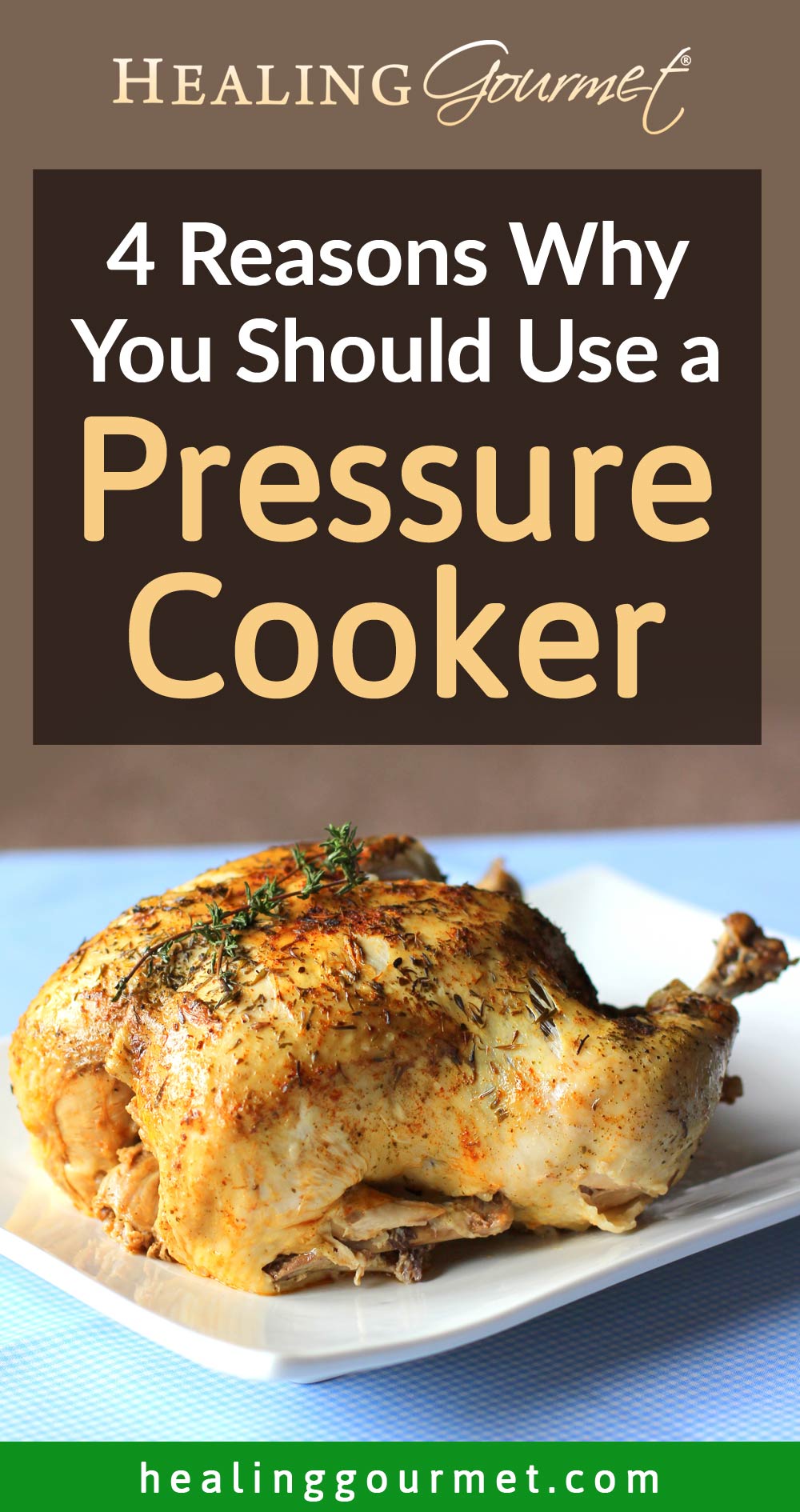
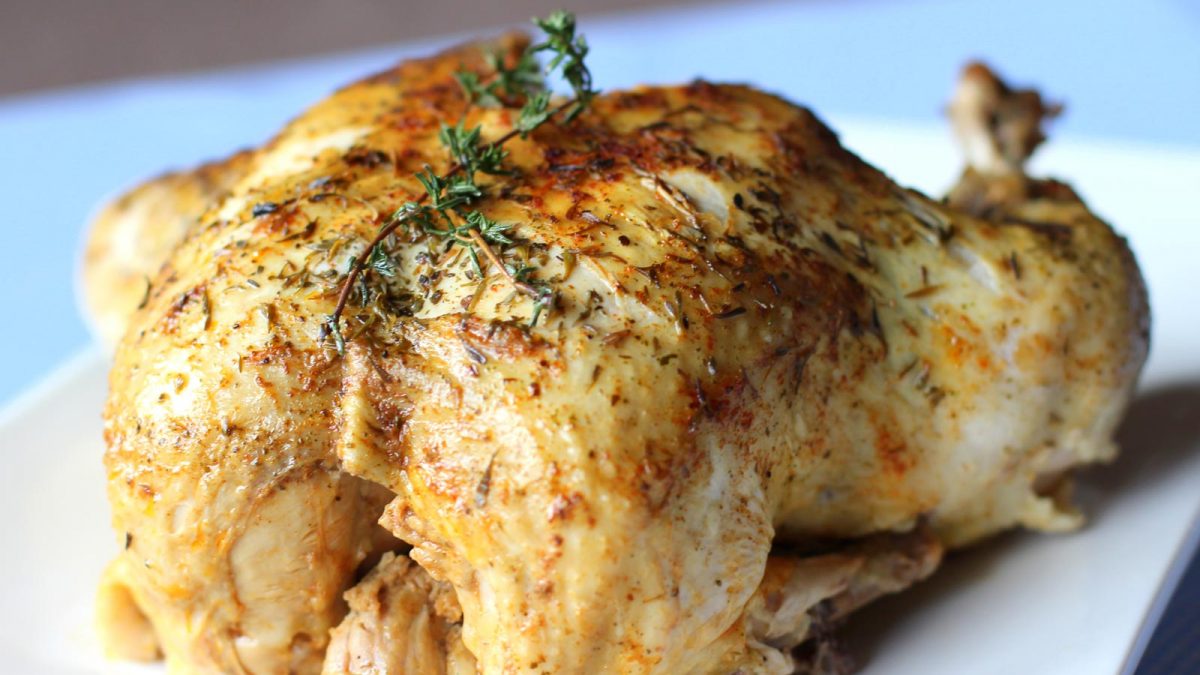
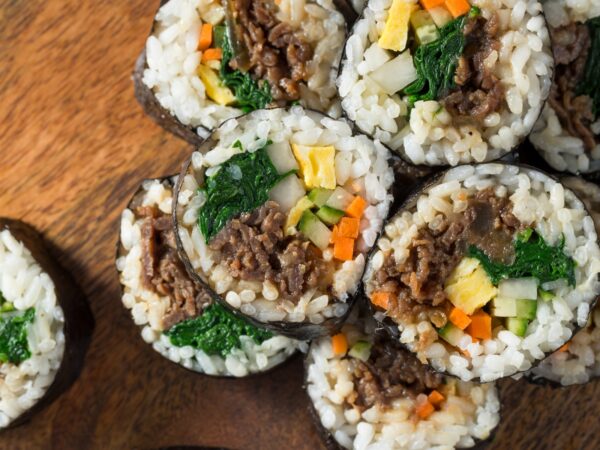
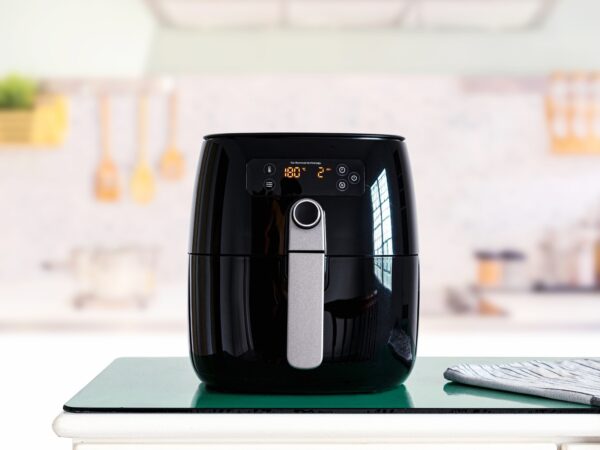

My mother loved her pressure cooker and I have never been able to make soup as well as she could. I don’t think a pressure cooker does justice to most other foods though, although it would be good for making stock. She cooked chicken or meat in the cooker and put vegetables in little metal baskets around it. The trouble was meat and vegetables all tasted the same. The vegetables were always grossly overcooked and the chicken soggy. I have never bought one and I never will. You can’t beat a properly roasted piece of meat or chicken and vegetable flavours are better when using a steamer or shallow frying them. I would says that a meat thermometer is my favourite bit of kit for meat followed by my microwave usable plastic steamer for vegetables. It was purchased as a rice steamer.
Hi Katharine!
Thanks so much for your comment and experience with pressure cooking.
I have been amazed at how well the pressure cooker preserves the texture of foods compared with the slow cooker. That “warmed over” everything tasting the same kind of thing has been one of the drawbacks to slow cooking. I’ve found that pressure cooking helps retain the structure of foods better than slow cooking – maybe it is just the Instant Pot – but I really love it.
And for veggies – I’m equally as impressed. I made Brussels sprouts for 1 minute on high pressure and they were bright green and crisp-tender. I also did a carrot ginger bisque and the carrots were cooked perfectly – again brightly colored and perfectly tender.
For the microwave, please be cautious. It saps away nutrients and is especially bad if you use plastic, as the plastic chemicals act as endocrine disruptors leach into the food. https://healinggourmet.com/diabetes-diet/endocrine-disruptors-in-food/
Be Well!
Kelley
I have a Fagor appliance that is a rice cooker (in six minutes), a slow cooker, and a pressure cooker. I find that I rarely use the slow cooker function because it is easier to use the pressure cooker and the food is better than it would be if slow cooked. I make a vegetable beef stew that presents with fork tender meat and brightly colored veggies after just 20 minutes in the pressure cooker. I remember my mothers on the stove pressure cooker exploding and food all over the ceiling in the fifties, but electric one i use is very safe and reliable.
The only reason pressure cookers explode is because people don’t keep the seals and the relief plug in good condition, if the rubber relief plug gets hard and brittle then it will just build pressure and explode. The best way to avoid that is to use the pressure cooker that you uses the weight to biuld the corect pressure but you still need to keep the seals and plug in good shape.
I have a Wolfgang Puck electric cockpot which, after 50 years of cooking is my favorite appliance.
My mother never used a pressure cooker because of the safety issues. In the late 50s, a classmate was severely burned at home when she simply walked through the kitchen and the pressure cooker exploded. It as a freak accident and she recovered very nicely, although it was a horribly painful experience.
Since purchasing my pressure cooker 2 years ago, I’ve used it to braise meats, and have been thrilled at the delicious flavor and texture of the completed food in a mere faction of the usual cooking time.
The secret to good vegetables is to remember that the pressure cooker time is even less than microwave time for cooking.
I’ve also found that by cooking the meat, then adding the vegetables for 5-7 minutes…. the veggies have absorbed the meat flavors while still retaining their individual texture and flavor. The flavor of each ingredient remains uniquely it’s own.
The Instant pot regulates the temperature by program, while with mine, I regulate the temperature and time by instinct…..
Using my electric pressure cooker has facilitated my ease of cooking tremendously! It has combined the best of electric skillet with crockpot for delicious meals in minutes.
Recently I braised chicken thighs in the pressure cooker, with lid off, like a skillet, then added stock, scraping the bits from the bottom with a wooden spoon; added baby carrots, broccoli florets and Dutch noodles; sealed the lid, set the timer for 5 minutes and had a perfect meal with everything cooked perfectly.
Like the old saying, “Timing is everything!”
At 70, with various physical limitations, I can sit the pressure cooker on the table, which is lower than the countertop, so that cooking from a wheelchair is easier for me… plus, the control will turn off the appliance, leaving it on warm for a bit before turning it off completely….. so, I don’t need to worry about leaving an unattended put on the stove…..
I certainly don’t want to be “that old lady who burned the house down from leaving a pot on the stove”! ????
Joy
I have a Wolfgang Puck electric pressure cooker which, after 50 years of cooking is my favorite appliance.
My mother never used a pressure cooker because of the safety issues.
In the late 50s, a classmate of mine was severely burned at home when she simply walked through the kitchen and the pressure cooker exploded. It was a freak accident and she recovered very nicely, although it was a horribly painful experience.
Since purchasing my pressure cooker 2 years ago, I’ve used it to braise meats, and have been thrilled at the delicious flavor and texture of the completed food in a mere fraction of the usual cooking time.
The secret to good vegetables, I’ve learned, is to remember that the pressure cooker time is even less than microwave time for cooking.
I’ve also found that by cooking the meat, then adding the vegetables for 3-5 minutes…. the veggies have absorbed the seasoning flavors while still retaining their individual texture, color and flavor. The flavor of each ingredient remains uniquely it’s own.
From what I’ve observed, it appears that the Instant pot regulates the temperature by program, while with mine, I regulate the temperature and time by instinct…..
Using my electric pressure cooker has facilitated my ease of cooking tremendously!
It has combined the best of electric skillet cooking with the ease of unattended (crockpot-style) cooking for delicious meals in minutes.
Recently I braised chicken thighs in the pressure cooker, with lid off,using it like a skillet, then added stock, scraping the bits from the bottom with a wooden spoon; added baby carrots, broccoli florets and Dutch noodles; sealed the lid, set the timer for 5 minutes and had a delicious meal with everything cooked perfectly.
Like the old saying, “Timing is everything!”
At 70, with various physical limitations, I can sit the pressure cooker on the table, which is lower than the countertop, so that cooking from a wheelchair is easier for me… plus, the control will turn off the appliance, leaving it on warm for a bit before turning it off completely….. so, I don’t need to worry about leaving an unattended put on the stove…..
I certainly don’t want to be “that old lady who burned the house down by leaving a forgotten pot on the stove”! ????
Joy
My Family has used a Pressure Cooker since before the 50’s,I will differently start cooking with mine more often, I use a Presto Pressure Cooker and have for many years. I think I would like a cook book on recipes, all and all it is a good deal
Be Well
Phyllis
Hi Phyllis!
Thanks for your comment.
Glad to hear you are on board with pressure cooking. There are so many great recipes out there, I think you will find it easy to get started with some new ideas.
Let us know when you find a favorite!
Be Well,
Kelley
I have a pressure cooker, in fact I have two ,a big one and a small one. I do not do a lot of cooking now. My husband and I are not big eater anymore. When the children were at home, yes we cooked big meals. The boys especial could put away some food. Mostly I cooked meats and beans or soups. In no time they were done. The slow cooker also has my devotion. Put on something, go to work and come home to food done. Your really have to learn how to put things together and what will do best cooked in what way. No microwave for me. Warm up a cup of coffee and that’s all. Plastic, I don’t even drink water out of plastic.
Hi Evangeline,
Kudos on your awareness about plastics. I think this is a really big thing and a silent health-harmer for us all. Avoiding plastics takes a good amount of thought and preparation.
Do you ever cook in advance and freeze your meals for you and your husband? I love to have meals at the ready when we need them, and mason jars are a great (inert) way to freeze.
Thanks for sharing and hope to hear back from you here on Healing Gourmet!
Be Well,
Kelley
I used to have my mother’s ancient, excellent pressure cooker, but that thing scared me to death. The only thing I ever used it for was canning. I have no desire to try one again, even if it is a healthy way to cook. Maybe if I were young it would be worth another try.
Hi Susan!
You are a lot like me. It took me 38 years to try one because of the stories I heard from some of my family members. I remember that little hissing knob on the top and was fearful to even go into the kitchen if something was in a pressure cooker – to me, it was like a kitchen grenade :-).
I bought my first one a month or so ago and can’t even tell you how different it is from the heavy aluminum, lock and load varieties my mom and grandma used. It is more like a hybrid slow cooker.
You ARE young! Give it a go. And let me know how much you love it.
Be Well,
Kelley
Greetings Kelley, I use a Cook 4 Me…..it is a modern day pressure cooker with an electronic touch screen giving one instructions and built in recipes for all sorts of goodies you can use it manually also …. It is not only a time saver and a healthy cooking option but a great buy made by Tefal….have a look at this product . I wouldn’t be without it ! I am an empty nester and it has brought new enthusiasm into quick healthy cooking for one as well as up to six persons…..just take a look at this product!
Hi Carol!
Thanks so much for your nice note and stopping by.
I’m so happy to hear that you are using a “new generation” pressure cooker and loving it. The touch screen sounds like a great bonus and the built-in recipe functions too. My Instant Pot has the built-in settings, but I have been using the manual settings and experimenting with it quite a bit to understand the results of pressure cooking a little better. As you know, there certainly isn’t a lot of margin for error with these babies – an extra minute can make crisp-tender veggies into “a la cafeteria” style, so I’m working on getting the timing down to a science on each of my favorites.
Thanks also for sharing about your Tefal pressure cooker, I will check it out!
Happy & Healthy (Pressure) Cooking,
Kelley
Thanks for the info! I have avoided pressure cookers, but not for their “danger of exploding”… To be honest, I’ve heard cooking at high temperatures (a.k.a. Pressure cooking) is bad for food in general. When you pass a certain temperature level, you kill all the nutrients, and wierd things happen. I do understand the same thing happens when you cook food at very low temps for too long. What do you know about this? I also understand that since steam (a.k.a. Water) is involved in pressure cooking, this high heat cooking method may not produce acrylamides and HCA’s, (unless you burn it!)
Hi Erika,
Thanks for your comment… and a good question.
I’ve been studying the impact cooking has on food for over a decade now. In fact, I wrote a book about the impact of cooking on specific foods. It’s called Smart Cooks Age Better and is part of The Food Cure series – http://tinyurl.com/m3u3a6c
I have been really impressed with the research on not only what pressure cooking can do in terms of nutrient retention… but what it doesn’t do in terms of heat-related cooking byproducts. I think the idea that denaturing proteins is unhealthy is a common misconception. (Mark Sisson has a great post on that here – http://www.marksdailyapple.com/dear-mark-strong-but-stiff-denatured-proteins-weeklong-fasting-and-oxalates).
Also, some nutrients are actually “unlocked” by heat – the lipid-soluble nutrients like beta-carotene, lycopene, lutein, and others become more much more bioavailable when cooked and when consumed with a healthy fat source.
What I do believe are detrimental are the heat byproducts that occur with higher temperatures, lower moisture and direct or close contact with the heating element (grilling, broiling).
With all of this being said, there is good research that shows a rare steak will have many nutritional benefits (more CoQ10, for example) that a longer-cooked food will lack. Because of this I aim to eat a very wide variety of foods cooked (or not) in their most advantageous way.
Be Well!
Kelley
Hi Kelley,
I have been using pressure cookers as long as I can remember, but I will buy a new one because the old ones are pretty difficult to open most of the time.
Hi Hannelore!
Yes, the new ones are so easy to open and even have “ring tones” to let you know it is properly sealed.
Be Well!
Kelley
I really want to love pressure cooking, I just haven’t gotten over the hump yet. I got a pressure cooker a few years ago, but when I learned that I have to let it sit for what seems like forever to lose the pressure before we can eat, I got totally discouraged. I was thrilled that it only took 15 min to cook chicken soup, but then it took at least 30 minutes for the pressure to release, so dinner was no quicker than usual. =/ I read that you can immerse your pressure cooker in ice water to release the pressure more quickly, but only to do this when the recipe says you can do so. I don’t have a fancy pressure cooker like the kind you use, mine looks more like a pot with a locking lid and a “rocker” on top.
Do you have pressure cooker recipes on this site?
Thank you!
Hi Cindy!
Thanks for taking the time to comment.
In my limited experience with operating a pressure cooker, I think that there are several things to consider.
First, the new generation pressure cookers have many more options than the previous versions. For example, I have been experimenting with the “steam” function, and also quick release versus natural release and manual settings versus pre-programmed. I am determined to have this cooking style down to a science! in the new pots (mine, at least) there’s no option to submerge it in water – the pressurized container is attached to the electrical outlet, so I would be cooked along with dinner.
Regarding recipes, yes – I have several great one that I will be posting over the next few weeks. So please stay tuned, ad also check out my easy pressure cooker chicken here – https://healinggourmet.com/healthy-recipes/pressure-cooker-chicken/
Also, I have a couple of basic pressure cooking books that serve as a general guide. Unfortunately, so many include ingredients that I do not use and are unnecessary. I like to play with the recipe guidelines that you can find in the pressure cooker’s manual as a starting place, and then create my own recipes from there.
Let me know how it goes. If you decide to buy a new generation pressure cooker, I’d love to hear how you think it compares to the standard version.
Happy & Healthy Cooking!
Kelley
Kelley, I checked your linked pressure cooker chicken recipe and I have two questions. First, the preparation instructions shay heat oil in the pressure cooker until shimmering but the ingredient list doesn’t call for any oil. And, I’m not sure what this step accomplishes. Second, I have a Farberware programmable pressure cooker that is more of an upright cylinder shape. I can put the chicken in neck end down or butt end down, but not breast side down.
Typically, I have only used the pressure cooker for making bone broth. I simply throw in an assortment of bones (whatever is on hand in the freezer), a few chopped carrots, onions and other vegetables, and a couple of tablespoons of organic apple cider vinegar, then fill to the line with water, program it for 90 minutes and let it go. I’ll be watching for your other pressure cooker meals. Thanks.
PS: I’m a single Dad with minor children so I appreciate all of the tips I can get.
Hi Bob,
Hooray for a dad that cooks healthy foods for his kids!
Thanks so much for your comment and the catch on the missing ingredient. I just fixed the recipe.
The purpose of the initial sear is just to make the skin a bit golden. I think you could skip that step without affecting the final dish if your pressure cooker does not accommodate the whole bird in that conformation.
I love the pressure cooker for making bone broth – it really does a great job of extracting all of that beneficial gelatin.
Look forward to hearing from you again!
Be Well,
Kelley
Hi Kelley, I have an electric pressure cooker. I always quick release, for timing purposes and because I don’t want delicate things like vegetables to get overcooked. However, is there a benefit to natural release over quick release from a nutrient standpoint? Do more nutrients evaporate into the quick-release steam?
Hi Cindy, I have the pot that cooks on the stove also. to release the pressure just turn on the faucet to warm and place the side of the lid & pot under the running water till the vents release. That is all it takes to cool it down. When you open the lid make sure your face is not over the pot. You don’t want a steam burn. 🙂
Kelley, I agree with you on pressure cooking. I have two which I use for different things. Want to make killer ribs? Put them in the cooker for about 20 minutes then throw on the grill and put your sauce. They are so tender and you know they are completely done. Or steaming crab legs, 15 minute and wow! I also pressure can a lot. I can beef and chicken. Oh did I mention beef stew in one half hour that tastes like it was on all day? It is a two step method where you cook the beef 20 min. and depressurize add all veggies to the beef fire it back up for 10 min. and done.
I notice someone mentioned chicken being soggy, I take mine out and put under the boiler for five minutes or so, yummmm!
Okay, I could go on and on but I am in your corner on this one,
Hi Richard,
You are a pressure cooking pro!
I’m going to have to try crab legs. And I really like the idea of adding the veggies to beef stew later – that was always one of my peeves with slow cookers: over-cooked, bland veggies.
Also, great idea to give chicken a broil to firm it up. I will do this on my next whole bird.
Thanks so much for your ideas here. Looking forward to learning more from you soon 🙂
Be Well,
Kelley
Hi Kelley,
I have used a pressure cooker for years. At first I used my mom’s pressure cooker that she got when she got married (gave me a kick to use a kitchen appliance that was as old as I am), but I got concerned about it being aluminum, so I bought a stainless steel one. It cooks on the stove and has a removable steam “jiggler”, which I just take off the vent when I am cooling it down. When the steam is done coming out of the vent, it is ready to open. One of the selling points the person demo-ing the pan had is the steam coming out of the vent is never very hot, just pleasantly warm, unless you hold your hand an inch from the vent, in which case it is VERY hot.
Anyway, I use it frequently for pork and beef dishes. One of my favorites is to pressure cook boneless pork ribs in the metal basket on top of a big cut up onion. You can sear the meat first or not, season how you like or dump BBQ sauce on it, add some water or broth, seal it up and away you go. Cook for 45 mins, remove the meat, dump the onions back into the broth, then I use a stick blender to puree the onions with the broth, reduce over medium-high for a couple minutes, and you have a lovely, thick gravy with no flour or other grain-based thickeners. Serve over whipped cauliflower, and viola! Quick, low-carb dinner.
Hi Susan!
Thank you for taking the time to share your experience with pressure cooking.
Good call on the aluminum – all of the older versions I remember were aluminum. Might be easy on the arms, but certainly hard on the body and brain.
I just got some pork ribs and will have to try your recipe. Sounds delicious and I love the idea of making a simple sauce with the cooked pureed onions over a nice cauliflower mash.
Be Well!
Kelley
Speaking to the Life Extension folks, I was told that most probably the >212 deg. F would destroy nutrients. Your earlier answer didn’t exactly address this.
Comment please.
Thanks
Hi Steve,
Thank you for your comment.
But I think I did answer the question in response to Erika above. Several potentially negative things can occur when cooking at high temperatures. However, many nutrients need heat in order to be best absorbed by the body. Unfortunately, it is not a simple formula of “anything cooked over 212 F is bad”. There are many factors to consider. Dry heat or moist? Is AGE-reducing lemon juice/acid, spices or marinade used?
You may want to read this recent study for specific foods, cooking methods and AGEs: Uribarri J, Advanced glycation end products in foods and a practical guide to their reduction in the diet. J Am Diet Assoc 2010;110:911-916.
Also, to note with pressure cooking: HIGH pressure is only 250 F. Compare that to grilling or broiling at 400 F+. I can cook a chicken breast in 8 minutes at 250 F in the pressure cooker, or 16 minutes at 400 F on the grill. Which is better?
Regarding cooking meats at/below 212 F, the only method I know of that will produce tasty results at that temperature is sous vide. This method takes a very long time and requires the meat be placed in a plastic bag to cook. This causes leaching of estrogenic plastic chemicals and other nasty endocrine disruptors into the food that have been found to promote cancer, fertility issues, diabetes and much more.
With all of this said, I am a big believer in eating large quantities of organic vegetables and roughly 50-70% of those raw, when tolerated. This means organic green juices (organic kale, spinach, fennel, ginger, spinach, lemon and maybe a small bit of apple) and a big green salad every day. I say “when tolerated” as many people with digestive issues cannot tolerate uncooked veggies. One size does not fit all.
I hope this provides a bit more insight on the topic or at least a place to start your exploration.
Be Well,
Kelley
By the way, I use a Duromatic (stainless steel). Very quiet. Can use a very small amount of water. It has 3 safeties and can even run dry, which is not recommended!
By the way #2, I thought a Silit, a ceramic pot, is toxicologically safer than stainless steel. I guess i was wrong.
Thanks
We have a Breville pressure cooker, and we love it! Our favorite dishes are chicken curry, pot roast, green beans and broccoli with bacon and onions! 🙂
I LOVE your site. I just started using a pressure cooker when we moved into our new home. The stove top didn’t work, so figured I would try this and LOVE it.
I have owned a pressure cooker for over 20 years and never cooked a meal in it. I sure do a lot of canning in it for both water bath and pressure canning about 9 months out of the year. I don’t remember the maker or if it’s aluminum or other without checking I would say aluminum do to the weight so if may have purchase another one to actually start cooking in one. I am definitely tempted to give this a try. .
I ordered the book Better Breads and Crusts for $14.00. It’s been charged to my credit card. I did not receive a receipt in my email and nothing comes up on my email to download it.
Hi Jan,
We’re happy to help you with this. You should have received a receipt from Clickbank immediately with your download links, and then a follow up email from us welcoming you.
We have passed this on to our customer service team. Please watch your email for a follow up shortly.
For future reference, any customer service issue can be handled at info AT healinggourmet DOT com
Be Well,
Kelley
My mother used a stove top pressure cooker and taught me to use it when I was very young. I have had a stove top model for many years but never used it. I received an Instant Pot for Christmas and use it several times a week. Food tastes amazing. Some of my favorites so far have been chicken and noodles, pot roast with potatoes, bone broth, hard boiled eggs, key lime pie, mac & cheese, Brussels sprouts with bacon, ribs, wings and black eyed peas. So easy to use and I don’t make as big a mess as when I’m cooking on the stove.
Love my Instant Pot. It replaces a number of other kitchen appliances.
What about the higher temperature factor? Wouldn’t the higher temperature kill off many more valuable nutrients, offsetting any benefits gained by speed? I used a pressure pot for years overseas, mostly for beans and ‘caramel’ made by pressuring cans of sweetened condensed milk.
Hi Lenita,
Thanks for your question.
Actually, when you apply pressure, the temperature can be lower, as temperature and pressure are inversely related.
Check out Laura’s great website and her explanation of how pressure cooking works: http://www.hippressurecooking.com/how-the-pressure-cooker-works/
Be Well,
Kelley
I have a Kuhn Rikon and cook meats and vegetables beautifully. To discover boiling and poaching eggs successfully was a revelation. Timing of course is vital. It’s science and if the rules are obeyed then the ease, cost, nutritional value and speed of pressure cooking is a joy.
You have an excellent web site Kelley, which I thank you for sharing.
Cheers y’all,
Kevin.
I got the Instant Pot back in November of last year, and I absolutely love it!! I use it 3-4 times a week and cook all kinds of things in it. I didn’t get many recipes with it so just started experimenting a little. I found it best to cook your meat until done, then add the veggies and cook for a few minutes longer. This keeps the veggies from turning to mush. I’ve done all kinds of soups, stews, roasts, rice, veggies, and all kinds or grains like split wheat and steel cut oats. I have a chicken at home and plan to try your roast chicken recipe tonight. Thanks for all the info on the bone broth, I plan to use the leftover bones from the chicken to make some extra gelatin tonight.
Great post – this thought has been bothering me since i got an Instant Pot.
One of the concerns I have is – the rubber/silicone/plastic …not sure what material – inside of the lid -is it safe ? Is it not emitting anything dangerous ? Traditional pressure cookers (stove top ones) do not have a plastic/rubber inside the lid…
Also – are we challenging nature by coming up with technology by doing things quicker – food was supposed to be cook with natural fuel – are we going against nature?
Not questioning anyone but trying to make sure I am feeding my family healthy stuff –not exposing them to anything harmful by cooking things faster, using electricity –going away from traditional methods
Hi Kelley- I have used a regular pressure cooker for years, but I thought I would try the next generation pressure cooker. I have tried several times going to the link you gave to Amazon, but the problem is that every time I have tried to place an order it says “ships in 1 to 2 months”. I can’t find one at any of the local or online stores either. Do you know of any other sources? Thanks for your help!
Hi Gayla,
Its probably because of their wild popularity – the company must be having trouble keeping up with demand. My guess is that Amazon will have them first since they were the #1 kitchen tool on Amazon.
It will be worth the wait, I promise!
Best,
Kelley
Hello, can you provide some evidence to your claim that the IP helps reduce Acrylamide? I am curious how it ‘eliminate two cancer-causing compounds (acrylamide and heterocyclic amines) which are often produced by other high-heat cooking methods’.
Thank you!
Hi Sara,
I’ve done quite a bit of research on all of these cooking compounds – LOPs, AGEs, HCAs, acrylamide – and published them in my book series, The Food Cure.
There’s lot’s of info on this site on those compounds with the references listed so you can read the studies.
Generally speaking, these compounds are formed at higher temperatures and with dry heat (acrylamide with carb foods; HCAs with protein foods). For example, potatoes cooked in hot oil or baked at high temps form acrylamide; potatoes boiled do not. Grilled and broiled meat forms HCAs; slow cooked meat does not.
Please check out the articles listed here:
https://healinggourmet.com/?s=acrylamide
https://healinggourmet.com/?s=heterocyclic+amines
I’m glad you are interested in this topic – it is a little-known cause of free radical damage in our bodies and can be prevented using the right cooking methods!
Be Well,
Kelley
PS – You say ” often produced by other high heat cooking methods”. But high pressure cooking allows you to cook at a lower temperature. Temperature and pressure are inversely related.
Kelly, I like your comments that are meant to guide cooks who are new to the idea of pressure cooking. All but one comment, that is. On February 7, 2018 at 7:38 pm, you wrote the following: PS – You say ” often produced by other high heat cooking methods”. But high pressure cooking allows you to cook at a lower temperature. Temperature and pressure are inversely related. This is not true, Kelly. If you raise the temperature of a gas in a closed container the pressure rises proportionally. Thus, temperature and pressure are directly related, not inversely related. Just recall that as the pressure rises in a pressure cooker, the cooking temperature also rises. At sea level, the temperature can rise to 250°F in most of the popular pressure cookers. You made the same erroneous comment on March 8, 2016 at 11:24 pm, I noticed. If I have misinterpreted your writing, I apologize. That said, I commend you highly for the help you give to your readers.
Hi Paul!
Thanks for being the Physics Police! You are right about one thing (and I will correct in the comments you highlight): Gay-Lussac’s law says that as the pressure in sealed container goes up, the temperature goes up, or as temperature goes up pressure goes up. P=kT. It has been 23 years since my last college physics class, so thank you for the correction – it’s proportional, not inverse.
Now, back to the point I am trying to make here about why pressure cooking is healthier…
The maximum temperature in a pressure cooker is 250 F. That is an extremely LOW temperature for which to cook food. In fact, the harmful compounds in food – like LOPs, AGEs, HCAs and acrylamide – form at higher temperatures and form more readily in a dry environment. For example, cooking potatoes at high temperature (400 F) in a dry oven will produce more acrylamide than if you were to boil potatoes. Heterocyclic amines (HCAs) form more readily in a broiled piece of beef… than a stewed, slow cooked or pressure cooked piece of meat… and so on. For these reasons, pressure cooking is a healthier way to cook food.
By the way, for someone with such keen attention to detail, please note that my name is spelled Kelley, not Kelly 🙂
I appreciate all the great information Kelley, I am a noobie to these but just got a Foodi Ninja at Sams for $189.00 after reading this and researching. It is a pressure cooker that crisp, with a built in crisp lid and fan, you raise it to put the removable pressure cooker lid on for meats then you can brown the meat, easy to raise the electric lid and check on browness as it shuts the fan and burner off . It Is fantastic and has a ceramic bowl and several racks. Gets great reviews on Amazon. It is 6.5 qt and can do a entire chicken if you get a smaller one, I`m very impressed with the quality and its beautiful. It comes w a recipe book.